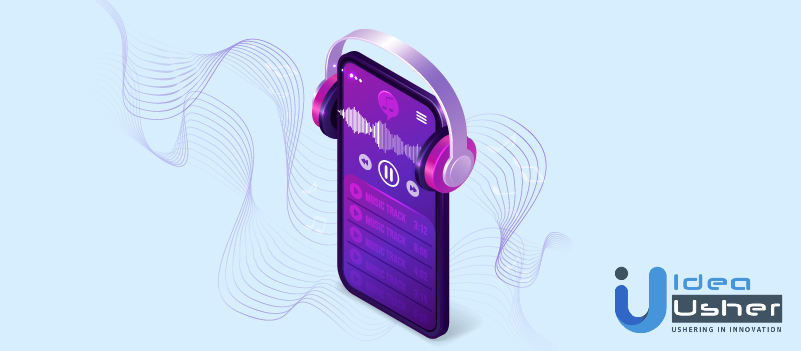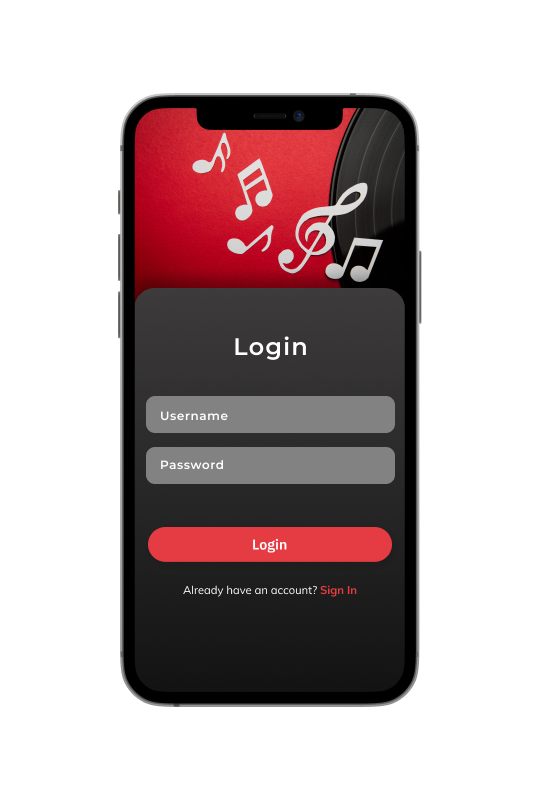
People tend to connect their emotions with music and carry it everywhere, like when they are traveling, doing some household work, and many more. Today’s advancements in technology and internet speed have led to the demand for streaming apps, hence raising the demand for music streaming app development.
According to research and market, from 2021 to 2025, the market revenue for music streaming websites can increase by $7.47 billion. During the observed time, it has a rising CAGR value that is progressing at a rate of roughly 19 percent.
In this blog, we’ll study a lot about music streaming apps. So let’s move forward and understand the key points.
Music Streaming apps | Market
The ease that customers experience from using music streaming apps contributes to market growth. Let’s look at a few intriguing stats.
- The music streaming services industry will expand by $10.01 billion between 2019 and 2023.
- User penetration can reach 12.2 percent by 2026, up from 9.4 percent in 2022.
- There will be 933.2 million active listeners worldwide by the year 2025.
- There are at least 3.6 music streams for each paid subscription.
Features of Music Streaming App Development
If one is considering adopting the music streaming app development process, then one should focus on the following app features:
1. User profile
Endpoints are embedded to get robust information about the user’s profile and to authorize each user with their comparable database, such as email address, password, and so on, to prevent spam interferences.
2. Effective Search Tab
To find a particular type of music, a search bar is needed. Individuals may make playlists of songs and albums and also save them by choosing the artist as a favorite.
3. Addition of Lyrics
You may enhance your user’s listening experience with more interest by including song lyrics in your on-demand music application. You may make it easier for users to use your music app by providing an option for the lyrics during playback because it is AI-enabled.
4. Push Notifications
A must-have tool for connecting users with the application and getting the latest updates from artists, communities, and friends on the application.
5. Download
By downloading the selected track to any device and making it available offline, it is possible to listen to it whenever you want without using the Internet.
6. Invite Friends
Allow your friends to listen to your favorite tracks by asking your social media or email id to enjoy music on the list.
7. Chat In-App
There is nothing better than engaging with your followers during a music streaming session. Allow your users to make the most of their interactions with other audiences to increase engagement and socialization while listening to music.
What is required for the Music Stream App Development Process?
To create apps on Android and iOS platforms, One should think about the tools and specialists they will be required for music stream app development.
Let’s have a look at the team members required.
Business Analyst
Project Manager
UI/UX designer
1 or 2 Android developers
1 or 2 iOS developers
Back-end developers
QA engineer
Let’s consider the tech stack mentioned below:
| Frontend Developer | JavaScript |
| Backend Developer | Python, Laravel, ROR |
| Data Storage | AWS, Google Cloud Platform, Amazon S3 |
| Database | MySQL, PostgreSQL, Cassandra |
| Server | Nginx |
| Web App Development | Bootstrap, HTML5 |
| DevOps | Docker, Datadog |
| Payment Integration | Paypal, Braintree |
| Social Media Integration | Facebook, Google, and Spotify SDK |
| Push Notification | Twilio |
Music Streaming App Development | Points to Consider
1. Refine your Idea
Do you want to learn how to begin with a music app? To find out who your rivals are and how you may stand out in the market, you must first do a thorough market analysis.
A unique selling point is something special you can provide the customer. It is a measurable value and also, there should be something different if your client receives it when they download the app and pay for a subscription. The value proposition may help you establish your business in the market.
2. Design
Make wireframes for the project as soon as you have identified the team that will create your music streaming application. The goal of the application must be clear. Every function and activity must be simple to use and intuitive. Easy-to-use apps are popular among users.
The time required to create a prototype relies on how well you considered what you wanted from the final result. Analyze your primary rivals and take notes from them. Also, take the highlights, and consider the app from the perspective of the user, not the owner.
3. Decide a Platform
It’s one of the major factors that will determine the development’s final cost. Also, it would be preferable to develop native applications for each platform to give consumers a genuine user experience and perfect compatibility with the current operating system.
Additionally, your developer team’s effort in creating services like music streaming or authentication will become easy.
4. Getting a License
You won’t be able to distribute someone’s content so easily. One should follow copyright laws and legal processes. If not, you might face legal action.
You must get a Public Performance Rights license before getting consumers high-quality audio or video material. For example, ASCAP.com, BMI.com, and SESAC.com are the three organizations that administer this in the USA. Additionally, a percentage of earnings must be given to artists as royalties for utilizing their music.
5. Work on Features and Tech Stack
It’s time to choose the key features of your application and the technology stack required to implement them after you’ve done defining and modifying your idea and target market.
For instance, you should focus on social network integrations and incorporate features. Create features like “chat” and “more customized profile page” if you want to develop your music streaming app that is more community-oriented. In the meanwhile, you could wish to add AI integration to your feature list if you plan to create a music app with better recommendations.
6. Develop an MVP and App
The importance of this phase is that it will help you to analyze market demand for your application and learn what your target audience genuinely demands.
As a result, you should avoid making it fully generic and lacking in the most critical features. Also, this will prevent you from receiving honest feedback from your users.
It’s time to continue working on the app’s finalization after receiving input from the MVP launch. Since design is the first thing that potential buyers see, focus on the points and improve them.
You already know the features the MVP wants you to concentrate on, so you can talk to the team about how to make them even better.
There are 3 integral parts that should be taken into consideration while developing an application.
- API (Application Performance Interface): It is built to make easy communication between the app and the back-end. Businesses can develop a scalable and secure interface for data exchange between the front-end and back-end of mobile apps by utilizing microservice-based architecture and appropriate encryption standards.
- Back-end: It indicates there’s a need to protect mobile app functionality via database and server objects (eg- HttpServerUtility). One might find it necessary to modify the new mobile product if they are utilizing the current back-end platform.
- Front-end: Most of the time, mobile apps include engaging user experiences that depend on real-time data and necessitate network connectivity between the app’s front-end and back-end. In other scenarios, the app works offline and requires a data storage system on mobile devices.
7. Updates and Support
Now your app is ready and individuals may use the app. Issues and problems may certainly be found, especially in the early phases of the application’s launch. Therefore, it is essential to offer 24/7 customer assistance and monitoring of the application’s functionality.
There are changes and modifications available to the existing app version so, the update is required for the app to gain confidence in the competitive market. This is why the development team one collaborates with is crucial.
4 Revenue Models Necessary for Music Streaming App Development
There are more than 4 different revenue models one may use to monetize their music streaming app.
Listed below are the finest options for your music streaming app:
1. Advertisements
To increase your revenue, utilize an audio streaming server to run an infinite number of advertisements in the form of images or videos in between the streaming tracks.
2. Premium Monetization Model
Applying a premium VOD subscription that allows consumers to access particular songs exclusively through a subscription package will allow you to profit from hit songs or special pieces of content.
3. Membership Model
You may schedule your subscription-based tracks for a period like monthly, quarterly, or yearly and stream them to your audience to guarantee revenue flow and loyal clients.
4. Coupons and Promotions
Make sure to take advantage of specific occasions where you may generate high returns with your content through special discounts and promo vouchers to get great outcomes with improved branding strategy results.
Final Words:
If one is looking to invest their money and time in a growing market, they should choose the music industry and streaming services. Although there are several big companies in the industry, there are still a lot of unfilled niches that may meet the demands of numerous clients.
In short, the music streaming app development mentioned above can help you grow your business in a growing market scenario.
Build your personalized music streaming app with Idea Usher and recruit developers as effectively as possible to complete your team of professionals. We here develop customized and secure music streaming apps. Get in touch with us for a feature-rich app.
Contact details: https://ideausher.com/contact/
Email: [email protected]
Phone Numbers: (+91) 946 340 7140, (+91) 859 140 7140, and (+1) 732 962 4560
FAQs
How to create a music streaming app?
Below are the 5 easy steps:
- Add your requirements and features.
- Hire your development team.
- Develop an MVP for your music streaming app.
- Get users’ feedback and add advanced features.
- Test your app and upgrade it.
How much does it cost to develop a music streaming app?
The cost majorly depends on the development team you hire, like UX/UI designers, quality assurance and testing team, developers, etc.
What licenses are required to start a music streaming service?
One needs Public Performance Rights to create their music streaming services. Organizations in the US—the Performing Right Society (PRS), and the American Society of Composers, Authors, and Publishers (ASCAP)—can manage the services.
Which are the 3 popular music streaming apps?
The following are the 3 most popular music streaming apps:
- Spotify
- Pandora
- Apple Music









Nikhil Jassal